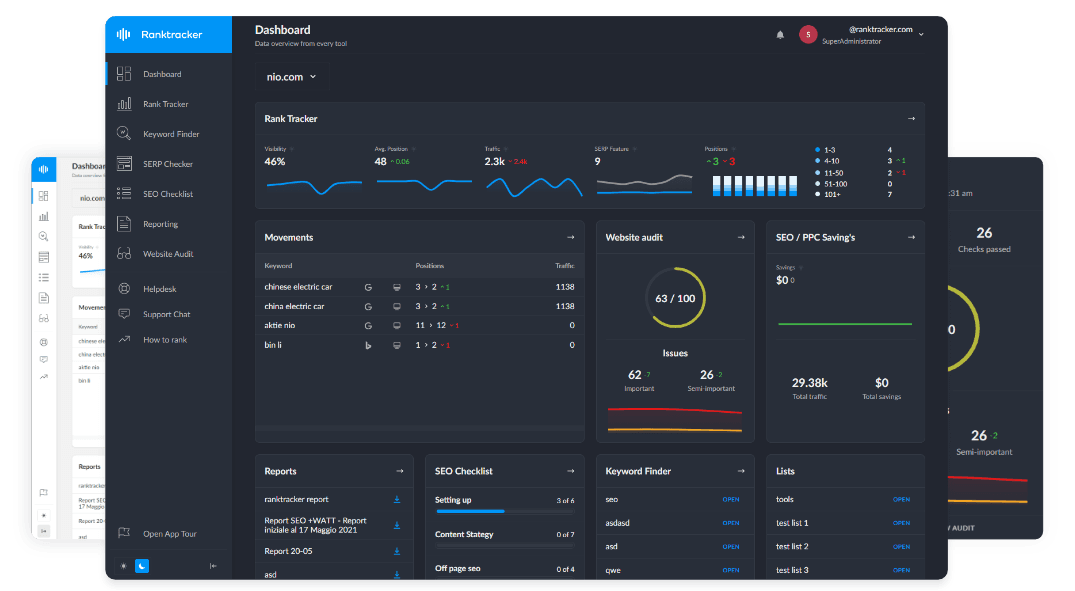Intro
In today's digital landscape, having a website is not enough — it needs to be optimized for search engines to ensure visibility and reach the right audience. With search engines like Google continuously updating their algorithms, building an SEO-optimized website in 2025 requires a strategic approach, combining technical expertise, user experience, and high-quality content. This guide will walk you through the essential steps and best practices for creating an SEO-friendly website that ranks high in search results and attracts organic traffic.
A well-optimized website not only improves your search engine rankings but also enhances user experience, increases engagement, and drives conversions. Whether you are a business owner, a web developer, or a digital marketer, understanding the core principles of SEO-optimized website building will give you a competitive edge in 2025.
What is an SEO-Optimized Website?
An SEO-optimized website is designed and structured to be easily discovered, crawled, and indexed by search engines. It follows best practices that help search engines understand the content, relevance, and structure of the site, leading to higher search rankings and better user engagement. Key components of an SEO-friendly website include:
-
Clean and responsive design – A site that adapts well to different devices and screen sizes.
-
Fast loading speed – Websites that load quickly rank higher and reduce bounce rates.
-
Optimized content – Content should be high-quality, relevant, and strategically use keywords.
-
Secure and accessible – HTTPS and proper site architecture make it easy for search engines to crawl and index the site.
-
Structured data and metadata – Helps search engines understand the context and structure of the content.
Building an SEO-friendly website from the ground up requires a combination of technical SEO, on-page SEO, and off-page SEO strategies.
Why SEO Matters for Website Building
Search Engine Optimization (SEO) is the backbone of any successful online presence. With over 8.5 billion searches conducted on Google every day, businesses that do not invest in SEO miss out on valuable traffic and potential customers. Here’s why SEO matters:
-
Increased visibility and organic traffic – Higher search rankings drive more traffic to your site.
-
Improved user experience – Fast-loading, well-structured websites retain visitors for longer.
-
Higher conversion rates – Targeted traffic leads to better engagement and increased sales.
-
Long-term growth – Unlike paid ads, organic traffic generated from SEO is sustainable and cost-effective.
Investing in an SEO-friendly website development solution ensures that your site remains competitive and adapts to the latest search engine algorithms.
Step-by-Step Guide to Building an SEO-Optimized Website
1. Choose the Right Platform for SEO
The foundation of a well-optimized website starts with the right platform. Platforms like WordPress and Elementor are popular choices because they offer flexibility, scalability, and built-in SEO features.
Why Elementor for SEO:
-
Elementor is a powerful page builder for WordPress that enables users to create professional, responsive, and visually appealing websites without coding.
-
It integrates with top SEO plugins like Yoast SEO and Rank Math for easy on-page optimization.
-
Elementor’s drag-and-drop interface allows for quick changes and testing to improve SEO performance.
2. Set Up a Strong Site Architecture
A well-organized site structure makes it easy for search engines to crawl and index your pages. A clear hierarchy also helps users navigate your site more effectively.
Best practices for site structure:
-
Use a logical hierarchy with categories and subcategories.
-
Ensure all pages are accessible within three clicks from the homepage.
-
Create a clear and concise menu structure.
-
Implement breadcrumb navigation to improve internal linking and user experience.
3. Optimize Website Speed and Performance
Page loading speed is a critical ranking factor for Google. Slow websites frustrate users and lead to higher bounce rates.
Tips to improve speed:
-
Use a fast and reliable hosting provider.
-
Minify CSS, JavaScript, and HTML files.
-
Optimize images using compression tools like TinyPNG.
-
Implement lazy loading for images and videos.
-
Use a Content Delivery Network (CDN) to improve global load times.
4. Create SEO-Optimized Content
Content remains king in the world of SEO. High-quality, relevant, and engaging content attracts both search engines and users.
Content best practices:
-
Perform keyword research using tools like Google Keyword Planner and Ahrefs.
-
Target long-tail keywords to capture specific search intent.
-
Write for humans first — keep the content clear and valuable.
-
Use headings (H1, H2, H3) to structure content logically.
-
Include internal links to related content to keep users on the site longer.
5. Mobile-First Optimization
With over 60% of global internet traffic coming from mobile devices, a mobile-friendly site is essential.
The All-in-One Platform for Effective SEO
Behind every successful business is a strong SEO campaign. But with countless optimization tools and techniques out there to choose from, it can be hard to know where to start. Well, fear no more, cause I've got just the thing to help. Presenting the Ranktracker all-in-one platform for effective SEO
We have finally opened registration to Ranktracker absolutely free!
Create a free accountOr Sign in using your credentials
Mobile optimization strategies:
-
Use responsive design with flexible grids and images.
-
Optimize tap targets and button sizes for touchscreen use.
-
Ensure fast loading times on mobile devices.
-
Avoid intrusive interstitials (e.g., pop-ups).
6. Secure Your Website with HTTPS
Security is a ranking factor for Google. An SSL certificate encrypts data and ensures secure communication between the user and the server.
Benefits of HTTPS:
-
Protects user data and builds trust.
-
Improves search engine rankings.
-
Reduces the chances of being marked as "Not Secure" by browsers.
7. Optimize Metadata and URLs
Metadata helps search engines understand the content of your site.
Best practices:
-
Write compelling title tags (under 60 characters).
-
Craft clear and descriptive meta descriptions (under 160 characters).
-
Use keyword-rich, clean URLs (e.g.,
example.com/seo-guide). -
Avoid special characters and underscores in URLs.
8. Leverage Internal and External Linking
Internal and external links provide context and improve search rankings.
-
Use descriptive anchor text for internal links.
-
Link to high-authority external sites where relevant.
-
Avoid broken links — regularly check and update links.
9. Implement Structured Data and Schema Markup
Structured data helps search engines understand the context of your content and display rich snippets in search results.
Examples of structured data:
-
Article schema
-
FAQ schema
-
Breadcrumb schema
-
Product schema
10. Monitor and Improve Performance
SEO is not a one-time task — it requires continuous monitoring and improvement.
**Essential tools for search engine optimization i**nclude:
-
Google Analytics – Track website traffic and user behavior.
-
Google Search Console – Monitor indexing status and search queries.
-
Ahrefs – Analyze backlinks and keyword performance.
-
SEMrush – Perform competitive analysis and SEO audits.
Common SEO Mistakes to Avoid
Even with the best strategy, mistakes can happen. Here are common pitfalls to avoid:
❌ Keyword stuffing – Overusing keywords leads to poor readability and lower rankings. ❌ Duplicate content – Search engines penalize websites with repetitive content. ❌ Ignoring mobile optimization – A desktop-only design limits reach and performance. ❌ Poor site navigation – Complex menus and broken links confuse users and search engines. ❌ Neglecting updates – Failing to update plugins, themes, and content can hurt performance.
How Elementor Makes SEO Easier
Elementor simplifies the process of building an SEO-friendly website by providing:
The All-in-One Platform for Effective SEO
Behind every successful business is a strong SEO campaign. But with countless optimization tools and techniques out there to choose from, it can be hard to know where to start. Well, fear no more, cause I've got just the thing to help. Presenting the Ranktracker all-in-one platform for effective SEO
We have finally opened registration to Ranktracker absolutely free!
Create a free accountOr Sign in using your credentials
✅ Pre-designed templates optimized for SEO and mobile. ✅ Easy integration with SEO plugins like Yoast and Rank Math. ✅ Fast-loading, clean code that follows SEO best practices. ✅ Flexible design options to adjust for performance and user experience.
By using Elementor, you can build a visually stunning and highly optimized website without needing advanced coding skills.
Conclusion
Building an SEO-optimized website in 2025 requires a strategic and technical approach. From choosing the right platform and creating high-quality content to optimizing performance and monitoring results, every step matters. Leveraging a powerful tool like Elementor can simplify the process and give you a competitive advantage in search rankings.
By focusing on user experience, performance, and content quality, you can create a website that not only ranks well but also engages and converts visitors. Start implementing these strategies today, and watch your website climb to the top of search results!

